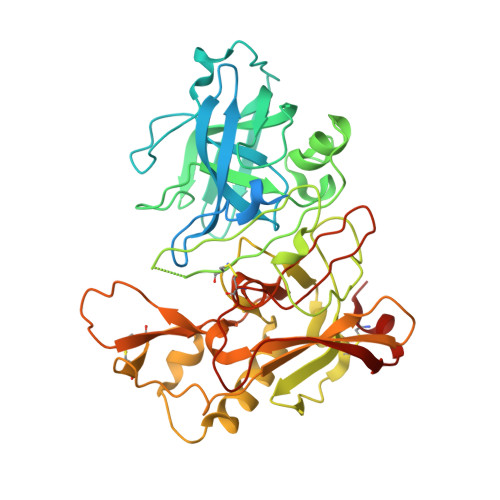Application of Fragment-Based Lead Generation to the Discovery of Novel, Cyclic Amidine Beta-Secretase Inhibitors with Nanomolar Potency, Cellular Activity, and High Ligand Efficiency.
Edwards, P.D., Albert, J.S., Sylvester, M., Aharony, D., Andisik, D., Callaghan, O., Campbell, J.B., Carr, R.A., Chessari, G., Congreve, M., Frederickson, M., Folmer, R.H., Geschwindner, S., Koether, G., Kolmodin, K., Krumrine, J., Mauger, R.C., Murray, C.W., Olsson, L.L., Patel, S., Spear, N., Tian, G.(2007) J Med Chem 50: 5912
- PubMed: 17985862
- DOI: https://doi.org/10.1021/jm070829p
- Primary Citation of Related Structures:
2VA5, 2VA6, 2VA7 - PubMed Abstract:
Fragment-based lead generation has led to the discovery of a novel series of cyclic amidine-based inhibitors of beta-secretase (BACE-1). Initial fragment hits with an isocytosine core having millimolar potency were identified via NMR affinity screening. Structure-guided evolution of these fragments using X-ray crystallography together with potency determination using surface plasmon resonance and functional enzyme inhibition assays afforded micromolar inhibitors. Similarity searching around the isocytosine core led to the identification of a related series of inhibitors, the dihydroisocytosines. By leveraging the knowledge of the ligand-BACE-1 recognition features generated from the isocytosines, the dihydroisocytosines were efficiently optimized to submicromolar potency. Compound 29, with an IC50 of 80 nM, a ligand efficiency of 0.37, and cellular activity of 470 nM, emerged as the lead structure for future optimization.
- CNS Discovery Research, AstraZeneca Pharmaceuticals LP, 1800 Concord Pike, Wilmington, DE 19850-5437, USA. philip.edwards@astrazeneca.com
Organizational Affiliation:


















